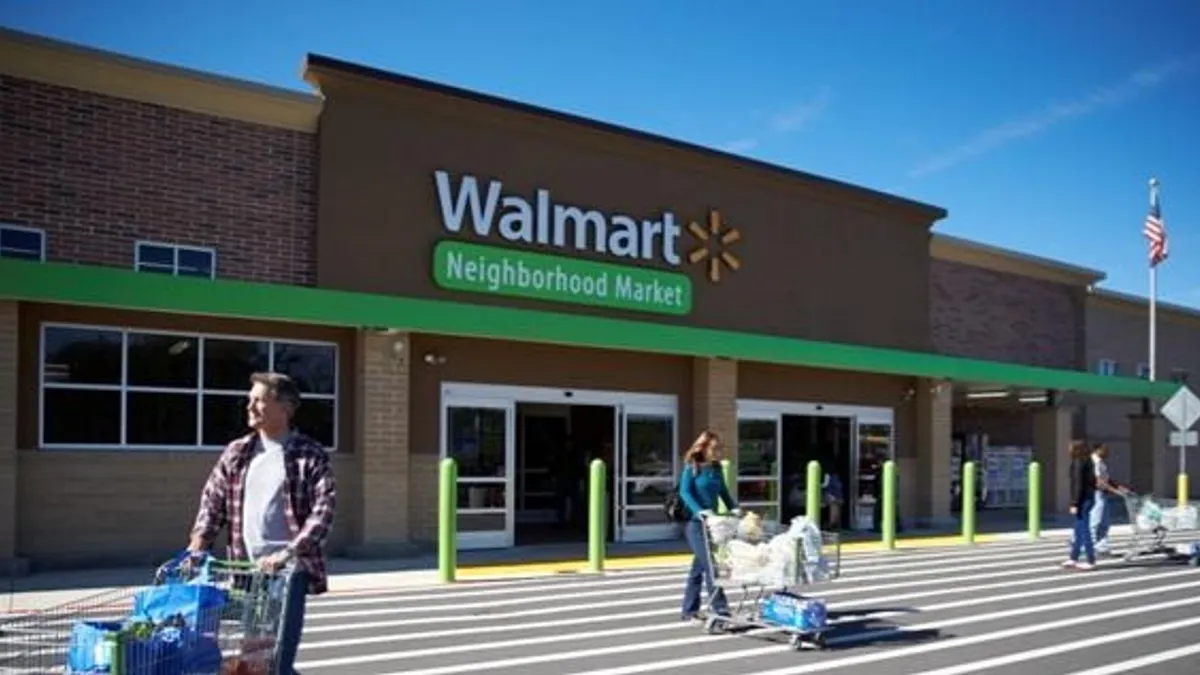Dive Brief:
- Walmart's decision to merge grocery pickup into its main shopping app earlier this year is allowing the company to use data and customer insights collected by its in-store and e-commerce supply chains to benefit both grocery and general merchandise operations in ways it hadn't been able to before making the change, John Furner, president and CEO of Walmart's U.S. operations, said Tuesday during KeyBanc Capital Markets' Future of Technology Series.
- Walmart is using artificial intelligence (AI) to predict when people are likely to buy certain products, what they will purchase and even if they will opt to pick up merchandise or have it delivered, Furner said, adding the collected data has helped the company adjust, as customers have quickly embraced e-commerce this year.
- The company's decision initially posed a challenge for Walmart. Managers had been concerned that combining two operations with separate supply chains could cause disruptions. "The upside is the customer's experience gets easier and supply chains work more fluidly ... but there's always risk that you could lose a customer," said Furner.
Dive Insight:
Walmart may be one of the largest businesses in the world, with more than 2 million employees, but the retailer wants to cultivate an image as a nimble organization willing to test and implement new ideas on a dime.
The company is bent on rapidly developing technology to tackle challenges faced by consumers and associates, with a goal of having tools ready for testing within as little as a few weeks, Furner said. For example, Walmart's Express Delivery service, which allows customers to have orders delivered within two hours, went from the idea stage to a pilot in only three weeks, according to Furner.
"We're thinking about innovation now in scales of days or weeks or months, not in terms of months or years," Furner said. "We used to do strategy once a year, and we would make sure that our strategy was ready for the next year, which led to an annual planning cycle" that slowed the company's ability to make changes.
Furner said that has changed as Walmart has retooled its thinking. "My team, if you looked at our calendar and what we work on, you would think we are having strategy meetings every week, which we are. It doesn't mean that we're changing the overall direction of the company long-term ... but within the direction we're going for the customer, we're constantly working on what's next," he said.
Walmart has used its focus on tech to shorten by days the amount of time it takes to get fresh items to shoppers by constantly monitoring the temperature of goods and tracking the data through the entire supply chain, including outside the country, Furner said. The company also uses AI and machine learning techniques to predict when people are likely to shop and determine what products to use as substitutes when items are out of stock.
Furner said Walmart's ability during the past few quarters to quickly bring together the teams that lead its e-commerce and in-store operations has already paid dividends for the company by removing the friction that historically had at times prevented the two sides of its business from working together effectively.
"At points in time you'd almost feel like we were running two businesses independently, and at times they almost competed with each other," Furner said.













